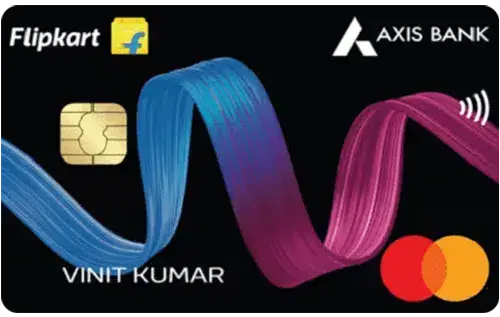Flipkart Axis Bank Credit Card

Credit cards have become a popular means of making purchases. They offer benefits like reward points, cashback, and the ease of online buying. While these perks can make spending easier, they can also lead to problems if not used carefully. Many people fall into the trap of overspending on credit cards. Using credit can tempt people to spend more than they can afford, which can lead to debt.
The National Pension System helps people save for their future by allowing them to put money into a fund that can grow over time. It offers different investment options and tax benefits, helping people take charge of their financial security for retirement. This program has helped people in India plan for retirement and save money.
Meaning of NPS
The National Pension System (NPS) is a government-sponsored retirement savings scheme that was launched in India in 2004. Initially meant for government employees, it was later opened to all Indian citizens in 2009. NPS aims to provide a steady income post-retirement and to encourage the habit of saving for the future among the working population. It is regulated by the Pension Fund Regulatory and Development Authority (PFRDA) and offers several ways to invest so you can grow your savings over time.
Key Features of NPS
- Voluntary Contribution: NPS is a voluntary scheme, meaning that you can decide how much and how frequently you wish to contribute.
- Adaptable Investment Options: People can choose from different investment options like stocks, government bonds, and corporate debt. This helps them pick investments that suit their comfort with risk.
- Tax Benefits: You can get tax deductions for your contributions to the NPS under the Income Tax Act.
- Retirement Planning: NPS is meant for retirement, and the money saved is intended to provide regular income after you retire.
- Withdrawal Rules: While NPS promotes long-term savings, it does allow for partial withdrawals under particular circumstances after a lock-in period of three years. Full withdrawal is permitted only after retirement, which is typically at the age of 60.
- Portable Account: You can keep your NPS account even if you change jobs or move to a different place. NPS accounts are portable, which means they go with you wherever you work.
How Does NPS Work?
Professional fund managers manage NPS contributions. Upon enrolling in the scheme, you open an NPS account, either through a Point of Presence (PoP) like bank or online through the NPS portal. Here’s how NPS works:
- Account Opening: You can open either a Tier I account (which is primarily for savings) or a Tier II account (which allows more flexibility and is similar to a savings account).
- Make Contributions: You can contribute a minimum of ₹500 for a Tier I account and ₹250 for a Tier II account as per the regulations. You can choose your contribution frequency, such as monthly, quarterly, or annually.
- Choose your Investment Mix: You can choose from different investment options based on how much risk you are comfortable with. For example, if you are willing to take on more risk for the chance of higher returns, you can put your money into stocks.
- Track your Investments: You can check the performance of your investments through the NPS portal or your PoP.
Benefits of NPS
- Retirement Security: NPS helps you build a good amount of money for retirement that can give you a regular income after you stop working.
- Diversification: Investors can diversify their portfolios by choosing different asset classes, thus spreading the risk.
- Low Costs: NPS has one of the lowest fund management charges compared to many private pension plans, which means more of your money stays invested.
- Regulatory Oversight: The PFRDA regulates NPS, which makes sure your money is managed clearly.
- Loyalty Benefits: Staying invested in NPS can lead to loyalty rewards, where you may receive additional returns due to continued contributions.
FAQ's:
This is the first item’s accordion body. It is shown by default, until the collapse plugin adds the appropriate classes that we use to style each
element. These classes control the overall appearance, as well as the showing and hiding via CSS transitions. You can modify any of this with custom CSS or overriding our default variables. It’s also worth noting that just about any HTML can go within the , though the transition does limit overflow.
This is the first item’s accordion body. It is shown by default, until the collapse plugin adds the appropriate classes that we use to style each
element. These classes control the overall appearance, as well as the showing and hiding via CSS transitions. You can modify any of this with custom CSS or overriding our default variables. It’s also worth noting that just about any HTML can go within the , though the transition does limit overflow.
This is the first item’s accordion body. It is shown by default, until the collapse plugin adds the appropriate classes that we use to style each
element. These classes control the overall appearance, as well as the showing and hiding via CSS transitions. You can modify any of this with custom CSS or overriding our default variables. It’s also worth noting that just about any HTML can go within the , though the transition does limit overflow.
This is the first item’s accordion body. It is shown by default, until the collapse plugin adds the appropriate classes that we use to style each
element. These classes control the overall appearance, as well as the showing and hiding via CSS transitions. You can modify any of this with custom CSS or overriding our default variables. It’s also worth noting that just about any HTML can go within the , though the transition does limit overflow.
Lorem ipsum, dolor sit amet consectetur adipisicing elit. Natus impedit itaque laboriosam voluptate ipsum rerum iure, totam autem quo maiores.
Editorial: Opinion Lorem ipsum dolor sit amet consectetur adipisicing elit. Blanditiis natus porro expedita, ipsam reiciendis voluptatum beatae possimus itaque eos voluptates?
Editorial: Opinion Lorem ipsum dolor sit amet consectetur adipisicing elit. Blanditiis natus porro expedita, ipsam reiciendis voluptatum beatae possimus itaque eos voluptates?
Comments
A WordPress Commenter
Hi, this is a comment. To get started with moderating, editing, and deleting comments, please visit the Comments screen in the dashboard. Commenter avatars come from Gravatar.
Reply
Credit Cards News & Offers
Stay ahead of the curve with real-time finance news.

The Financial impact of credit card overuse how to avoid common pitfalls in india
It is a long established fact that a reader will be distracted by the readable content of a page when looking at its layout. The point of using Lorem Ipsum is that it has a more-or-less normal distribution of letters, as opposed to using ‘Content here, content here’, making it look like readable English. Many
Read More →
The Financial impact of credit card overuse how to avoid common pitfalls in india
Credit cards have become a popular means of making purchases. They offer benefits like reward points, cashback, and the ease of online buying. While these perks can make spending easier, they can also lead to problems if not used carefully. Many people fall into the trap of overspending on credit cards. Using credit can tempt
Read More →
Yes Bank marquee vs hdfc diners club black credit card which card is better
The latter part of 2023 saw the launch of two premium credit cards by some of the largest players in India’s private banking sector. HDFC Bank launched its upgraded and exciting HDFC Diners Club Black Metal Credit Card, while Yes Bank came in with its new and revamped Marquee Credit Card. Both these credit cards
Read More →